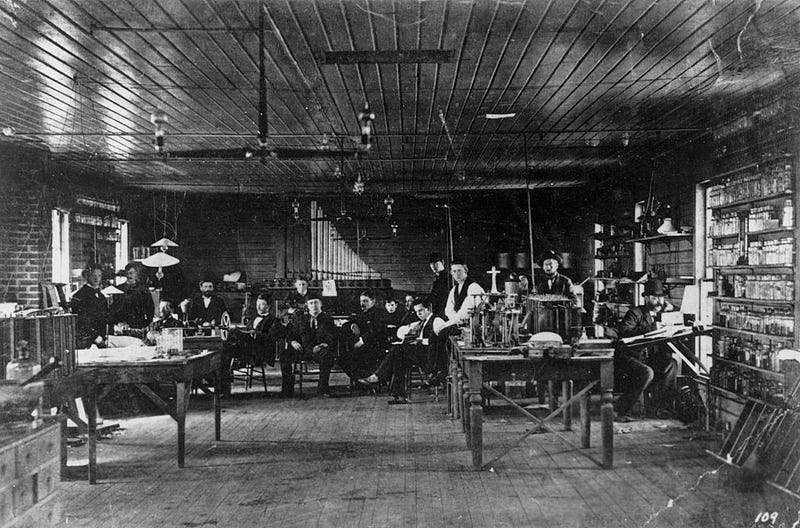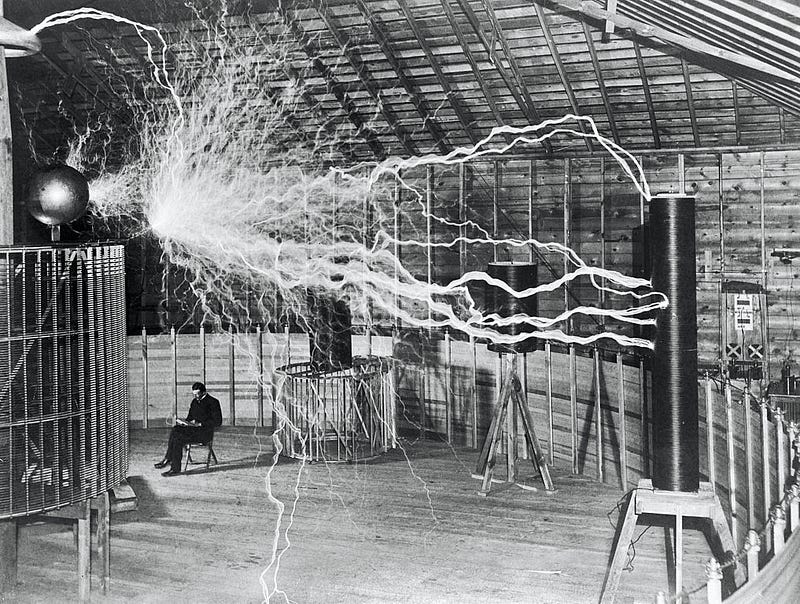The Battle of Electricity: Edison vs. Tesla's Controversial Rivalry
Written on
The Battle of Electricity: Edison vs. Tesla's Controversial Rivalry
We recognize Thomas Alva Edison as a key figure in innovation, celebrated for his enhancements to the incandescent light bulb and for having over a thousand patents to his name, including the phonograph and motion picture camera. Yet, there exists a lesser-known, more troubling aspect of his character that is often ignored.
Edison was driven by a desire to prove his inventions superior and to undermine competitors like Nikola Tesla, primarily for financial gain. His relentless pursuit of fame led him to engage in morally questionable actions. This article delves into the darker side of Edison's legacy and the infamous conflict known as the War of Currents against Nikola Tesla.
The War of Currents
In 1884, Nikola Tesla arrived in New York and began working at Edison’s headquarters in Manhattan. Their eventual public dispute would later be referred to as "The War of Currents."
Initially, their relationship was cordial; Edison was 37 and already an accomplished inventor. Tesla's responsibilities included setting up laboratory equipment, repairing machines, and designing new devices.
In 1879, after extensive development of lightbulb technology, Edison introduced the first incandescent bulb, which lasted 14.5 hours. "My light is at last a perfect one," Edison declared to the New York Times. People flocked to Menlo Park to witness the illumination of his laboratory during a public demonstration on December 31, 1879.

Edison's demonstration marked the beginning of his ambitions to construct hydroelectric plants generating Direct Current (DC) power, which he believed would yield substantial royalties. However, he recognized the challenge of transmitting DC over long distances, as voltage would drop significantly beyond a mile. The inability to regulate DC voltage made it hazardous, necessitating lower voltages for safe use, which further limited its range. While Edison accepted this compromise, he was determined to find a solution.
Seeking Tesla’s Expertise
To address the limitations of DC, Edison turned to Tesla, whose strong background in mathematics made him the ideal candidate for the task. Edison promised Tesla $50,000 if he could devise a solution.
Tesla began his work and suggested using Alternating Current (AC). He showed that by employing transformers, voltage levels could be adjusted, allowing for long-distance energy transmission without the significant losses associated with DC. AC proved to be a far more effective alternative.
However, since DC had become synonymous with Edison's identity and he held numerous related patents, switching to AC would mean substantial financial losses. Consequently, he retracted his promise of compensation and dismissed Tesla’s innovative ideas as "splendid but utterly impractical." This refusal prompted Tesla to leave Edison’s employment and seek out new opportunities.
In 1885, Tesla was hired by industrialist George Westinghouse, who recognized the potential of AC current and embraced Tesla's concepts. Edison, aware of Westinghouse's wealth and ambition, saw him as a rival. The rivalry escalated into "The War of Currents," with Edison becoming increasingly focused on undermining Tesla and his AC innovations, revealing a darker side of his character.

Edison’s Campaign Against Tesla
For both financial and scientific reasons, Edison portrayed AC as dangerous, striving to convince the public of its hazards.
In 1888, Edison descended to a new low by electrocuting a stray dog with AC current. He rigged a metal sheet to an AC generator and led the dog to drink from a pan on top of it, resulting in the animal's death. Edison callously remarked, “the little cur dog fell dead.”
Edison was also rumored to have electrocuted cattle, and there are claims he ordered the execution of an elephant named "Topsy" using electric current. While it was his employees who carried out these actions, Topsy was just one of many victims during this conflict. In total, Edison's team reportedly killed 44 dogs, 6 calves, and 2 horses.
Edison enlisted the help of an electrical engineer, Harold Brown, to conduct similar demonstrations. Brown would pay children to bring him stray dogs for testing. In one instance, he administered 1,000 volts of DC current to a dog, which survived, but when he shocked it with 300 volts of AC, it died instantly.
In response to Edison's cruel demonstrations, Tesla organized his own exhibitions to dispel fears surrounding AC. During these events, he showcased his ability to light lamps wirelessly, even allowing AC